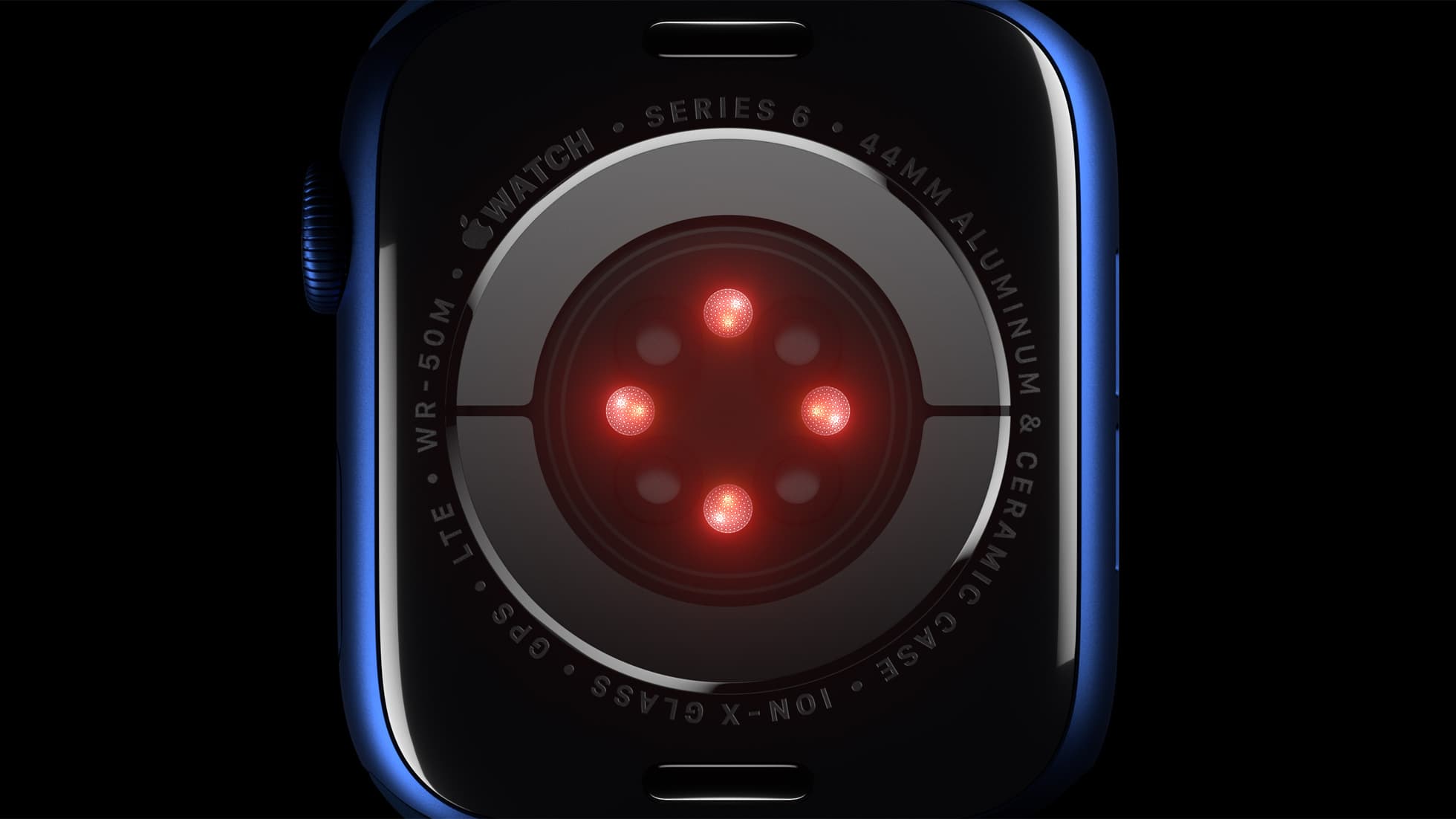
The Apple Watch provides a pair of health-tracking features that measure your heart rate and heart rhythm, each officially cleared by the United States Food and Drug Administration (FDA). However, blood oxygen monitoring that’s available on the new Apple Watch Series 6 model doesn’t need a clearance from the FDA, and here’s why.
All Apple Watch models have a photoplethysmogram, which is an optical sensor built into the back crystal that takes your heart rate measurements in form of beats per minute. And starting with the Series 4 models onward, the wearable device has an additional electrical heart sensor that lets you measure the electrical activity of the heartbeat on the go.
So, two things: the optical sensor measures your heart rate while the ECG sensor takes readings of your heart rhythm. Both these sensors had to be cleared by the FDA because Apple is using them to sense abnormal heart activity and detect a condition called atrial fibrillation
In fact, Apple had to publish research studies proving that the ECG feature was able to flag atrial fibrillation. Apple didn’t need to do the same thing for blood oxygen monitoring on Series 6 because blood oxygen monitoring is just a wellness feature.
The Verge’s Nicole Wetsman:
Blood oxygen monitors, or pulse oximeters, are considered Class II medical devices by the FDA. Generally, any company that wants to sell one in the United States has to submit documentation to the agency confirming that its product works just as well as other versions of the same product already on the market.
There’s a workaround, though: if the company says that the product is just for fun or for general ‘wellness,’ they don’t have to go through that process. They can’t claim that it can diagnose or treat any medical conditions, but they can put it up for sale.
That’s the route Apple went down. They’re not saying that their monitor can diagnose any disease, just that it’s offering up the information.
Indeed, it’s spelled out in black and white in the FDA’s guidelines that a medical device must prove that it can treat specific diseases or conditions. And if not, any such device should be considered a general wellness gadget, not a regulated medical device.
Apple itself states in the fine print at the bottom of the Apple Watch Series 6 page that the “Blood Oxygen app measurements are not intended for medical use, including self-diagnosis or consultation with a doctor, and are only designed for general fitness and wellness purposes.”
The devil is in the detail.
Also, there’s something to be said about a difference between a device that has been “cleared” by the FDA from one that has been “approved,” according to this CNBC explainer:
Simply put, cleared medical devices are defined by regulators as those that are determined to be similar to another legally marketed device. The FDA still reviews the submission, called a 510(k), before it provides clearance. A pre-market approval (PMA) is a more rigorous process and applies to higher risk medical devices.
Apple wants its pulse oximeter to eventually become vetted by the FDA so they’ve partnered with researchers to conduct three health studies involving using the Apple Watch in order to explore how blood oxygen levels can be used in future health applications. A partnership with the University of California, Irvine, and Anthem will determine how longitudinal measurements of blood oxygen and other physiological signals may help manage and control asthma.
It’ll partner with investigators at the Ted Rogers Centre for Heart Research and the Peter Munk Cardiac Centre at the University Health Network, too, to better understand how blood oxygen measurements and other Apple Watch metrics can help with management of heart failure.
And lastly, investigators with the Seattle Flu Study at the Brotman Baty Institute for Precision Medicine and faculty from the University of Washington School of Medicine will seek to learn if the heart rate and blood oxygen data captured by the watch could hint at early signs of respiratory conditions like influenza and COVID-19, according to the Apple’s press release.
In other words, Apple has been conducting research studies to see how machine learning and data obtained from the watch’s onboard health sensors could be used to indicate abnormal blood oxygen measurements that in turn might point to a more serious health condition.
So to sum up, the earlier Apple Watch features that track heart rate and heart rhythm are vetted by the FDA while blood oxygen monitoring is not because the iPhone maker has categorized it as a wellness tool — but that, too, could change down the road.